9 Tips You Need to Know for BLM Camping in Your RV
If you’re heading out to enjoy our nation’s vast public lands, these tips for BLM camping will ensure you are prepared to camp responsibly.
The Bureau of Land Management (BLM) manages one in every ten acres of land in the United States. Their mission is to sustain public lands for present and future generations. As RVers, we’re so grateful for these amazing public lands and for the access granted through the BLM.
There is BLM land in every state, but most of it is concentrated across 12 Western states. For recreational purposes, the BLM allows camping on public lands.
This can be at developed campgrounds or dispersed camping areas. Campgrounds typically require a fee, while dispersed camping is almost always free.
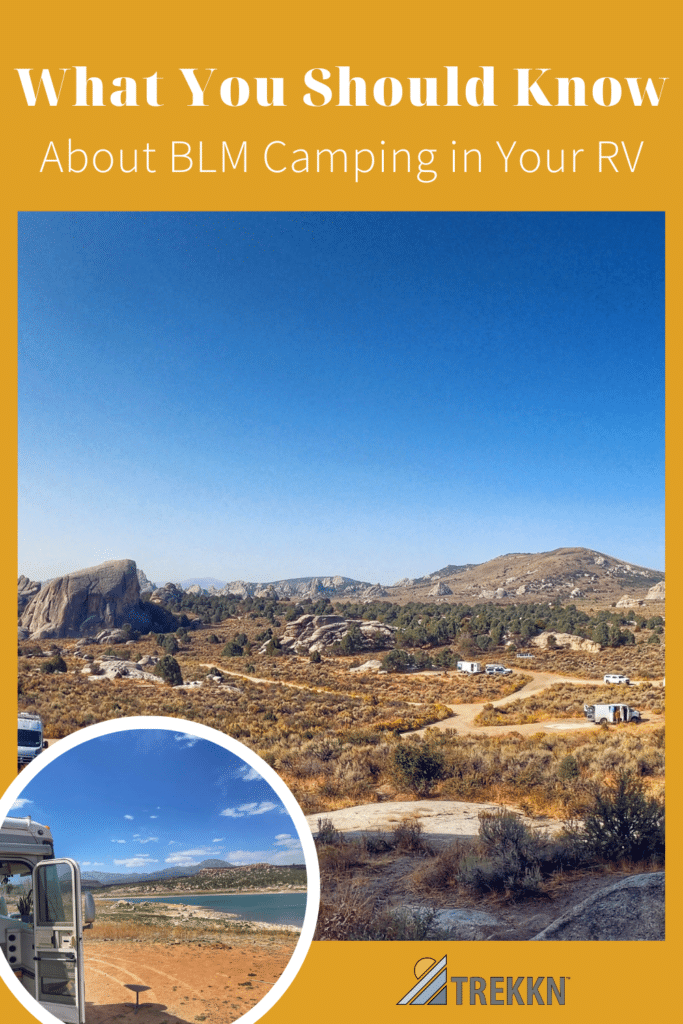
We may earn a small commission for qualifying purchases through links in this post at no additional cost to you. Please read our disclosure for more information.
Where to Start With BLM Camping
If you’ve never camped on BLM public lands before, you may want to start with choosing a destination. Once you select a particular area that you’d like to visit, you can then figure out if there’s BLM camping nearby.
Here are the top U.S. states for BLM camping:
- Alaska
- Arizona
- California
- Colorado
- Idaho
- Montana
- Nevada
- New Mexico
- Oregon
- Utah
- Washington
- Wyoming
Once you have an area or destination in mind, it’s time to locate a camping spot. Let’s start there, and then walk through the rest of our top tips for BLM camping.
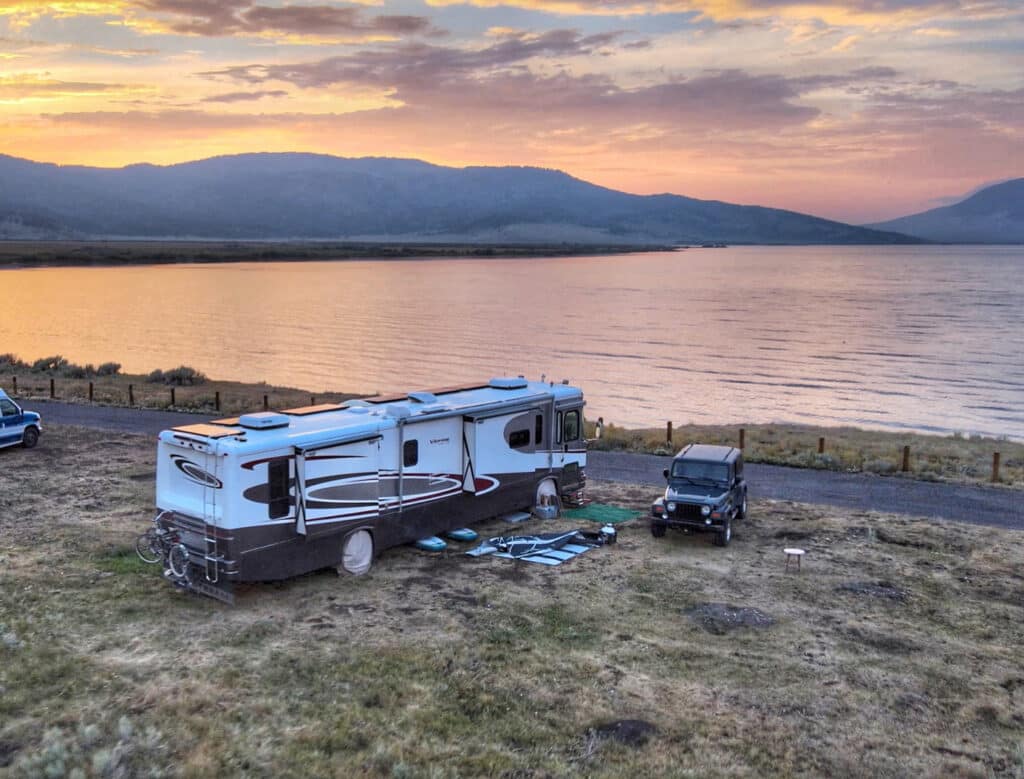
How to Locate BLM Camping Spots
Most BLM campsites are available on a first-come-first-served basis (so arrive early to get a spot). You can call the local field office or visit the regional webpage for more details and information about camping areas.
For example, the Bureau of Land Management page for Arizona shows all of the regional field offices as well as the camping areas that are located in each region.
Note that BLM websites also indicate important guidelines. For example, the Arizona site indicates the total allowable duration for dispersed camping, which is up to 14 days within a period of 28 consecutive days.
Dispersed camping areas are generally situated along secondary roads. They may be a bit harder to locate than a developed campground. Scout ahead in a capable vehicle whenever possible.
Look for fire rings or other obvious disturbances to the natural landscape. Please camp only in areas that have been previously used for camping.
USING APPS
If you’re using an app like Campendium or Free Roam to plan your camping trip, you can use the filter for “public” sites.
The public filter will show you all of the public lands available, including BLM, National Forest, National Park, State Park, and county park lands.
It’s always a good idea to plan one or two backup options in case the space is full or it doesn’t accommodate your size or style of RV. Using the apps to do your research is a great way to make a plan in advance of traveling.
Read as many reviews as you can, as other RVers may leave invaluable tips about a low-clearance bridge or other hazards or potential obstacles to consider.
FIND A BLM FIELD OFFICE
In addition, the local BLM field offices provide a wealth of information. They’ll know if your RV can fit in a specific spot, or if the road is washed out due to recent rain.
We highly recommend stopping at a field office whenever possible on your travels to ensure you have the best experience possible. The onsite agents will help ensure you are aware of all guidelines and recommendations for using the land properly.
Essential Know How for BLM Camping
Safety
In our many years of camping on public lands, we generally feel safe. We have even become friends with many of our camping neighbors.
Trust Your Instincts
That being said, there have been a few times when we got a weird vibe or something just felt “off”. In those instances, we trusted our gut and continued on to the next available option.
Use good judgment and leave if an area feels unsafe. We hope you don’t, but if you have a situation where you suspect a crime, please use follow the instructions below from BLM.gov.
NATURAL HAZARDS
In addition to watching out for potentially suspicious activity on public lands, be very aware of your wild, natural surroundings.
While camping, you could be threatened by wind, water, or any bad weather. If you’re camping near a river, be sure to check the local weather and make sure high volumes of rainfall aren’t expected overnight.
A rapidly rising river could wash your campsite away.
This is one of the many reasons why we like to stop at the local BLM field offices before we choose a campsite. A little knowledge can go a long way!
BLM Camping Etiquette
There are actual, written guidelines for camping on public lands, and then there are some unwritten rules.
Don’t be “that guy” that ruins a beautiful weekend in nature for everyone else. Instead, just be aware of and follow these simple rules.
Official BLM Guidelines
- Unless otherwise posted, quiet hours are from 10pm – 6am
- Always build fires in existing fire rings
- Never leave your fire unattended
- Check current fire conditions for campfire regulations and restrictions; never have a fire during a fire ban
- Camp in established sites, do not create new sites
- Camp at least 200 feet away from any water source
- Pack out all waste
Unwritten Rules and Guidelines
- Leave it better than you found it, pick up some litter and take it with you when you leave
- Don’t cut branches off a tree because you forgot firewood
- Never carve into tree bark or scratch markings into rocks
- Leave no trace
- Don’t park too close to other campers. Give some space. Don’t block their view or cramp their style
- Please don’t run your generator all day
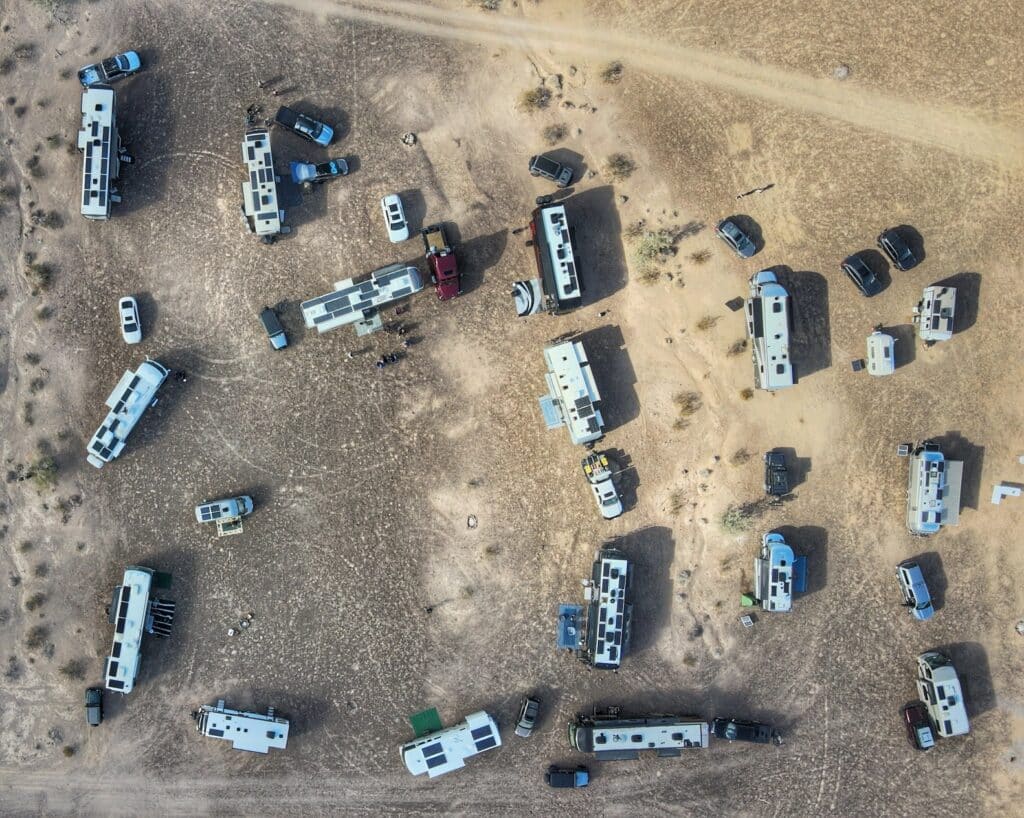
How Long Can You Stay at a BLM Camping Spot?
Generally speaking, dispersed camping is allowed on BLM lands for up to 14 days within a 28-day period. Always confirm the details for the specific camping area in advance of your departure.
What does it mean to abide by the most common stay limit?
According to the Bureau of Land Management:
“The 28-day period begins when you first occupy a specific location on public lands. You can reach the 14-day limit either through a number of separate visits or through 14 days of continuous overnight occupation during the 28-day period. After the 14th day of occupation, you must move outside of a 25-mile radius of the previous location until the 28th day since the initial occupation.”
BLM.gov
This usually only becomes a point of concern with full-time RVers, and is not as much of an issue with recreational campers.
The reason for these rules is to prevent damage from continual use of any one area. Basically, once you’ve stayed for two weeks, it’s time to move on. You don’t have to go far, but you need to go at least 25 miles away. It’s a simple way to care for the land you are privileged to be able to use.
RV Setup for BLM Camping
Anyone can camp on BLM land with as little as a tent. Heck, you can even sleep in your car.
However you choose to camp though, BLM camping means you’re camping off-grid with no hookups. With this in mind, we’ve rounded up our top five essentials for a good off-grid camping setup.
Solar Panels
From fully installed RV solar systems to simple, portable suitcases, solar is widely available and quite affordable today.
Foldable 100W solar panel suitcase with an adjustable kickstand is ideally designed for off-grid camping and RV boondocking. 200 Watt 12 Volt.
If you’re a camper who needs power, going solar means no more generator noise. And everyone will thank you for that. You’ll also thank yourself!
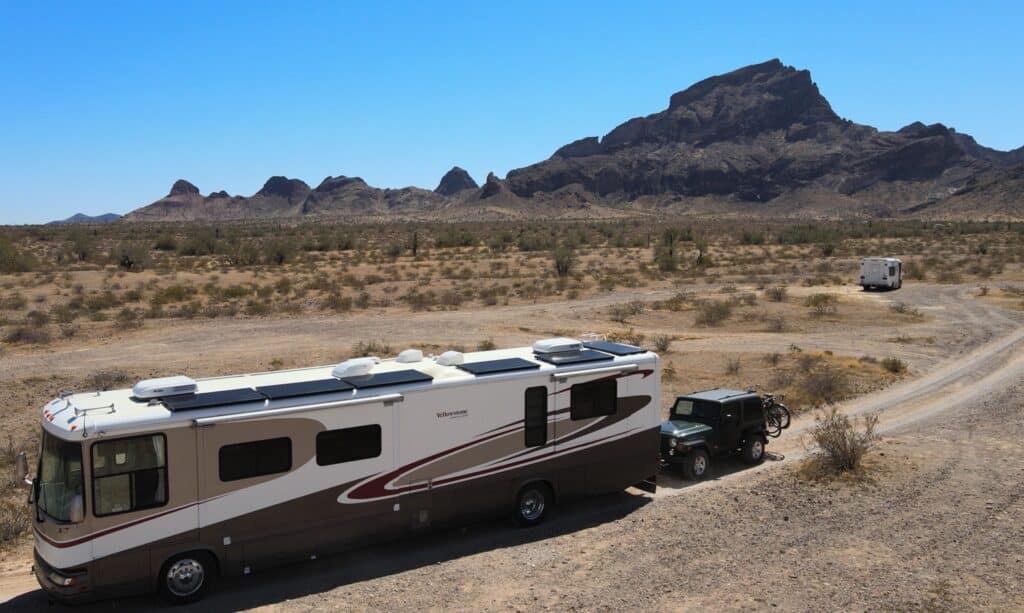
Battery- or Solar-Powered Gadgets
Even if you have a battery bank in your RV, it’s always nice to have small gadgets that don’t drain power when the sun is down.
Small Solar Lantern
We love the Luci light by MPOWERD and it’s grown up with us from tent camping to car camping to RV camping.
75 Lumens, waterproof with clear finish and white LEDs. Light lasts up to 24 hours. Great for camping and backpacking, and to carry in an emergency preparedness kit.
We also have a battery-powered white noise machine that comes in very handy!
Outdoor Patio
We like to set up a mat, chairs, and a table for a quick pop-up outdoor living area. When you are dispersed camping on BLM land, there won’t be a picnic table or any amenities at the site.
We love our CGear sand-free outdoor mat and Helinox sunset chairs.
Lightweight, high-back, and collapsible camping chair with pockets.
As for a table, really anything will do, we have a plastic folding table from Walmart. We generally top it with a simple tablecloth. It works really well in these remote locations.
This table folds for compact easy storage. Adjust to 24", 26", or 28" height and use as extra counter space for meal prep, a side table, or work space.
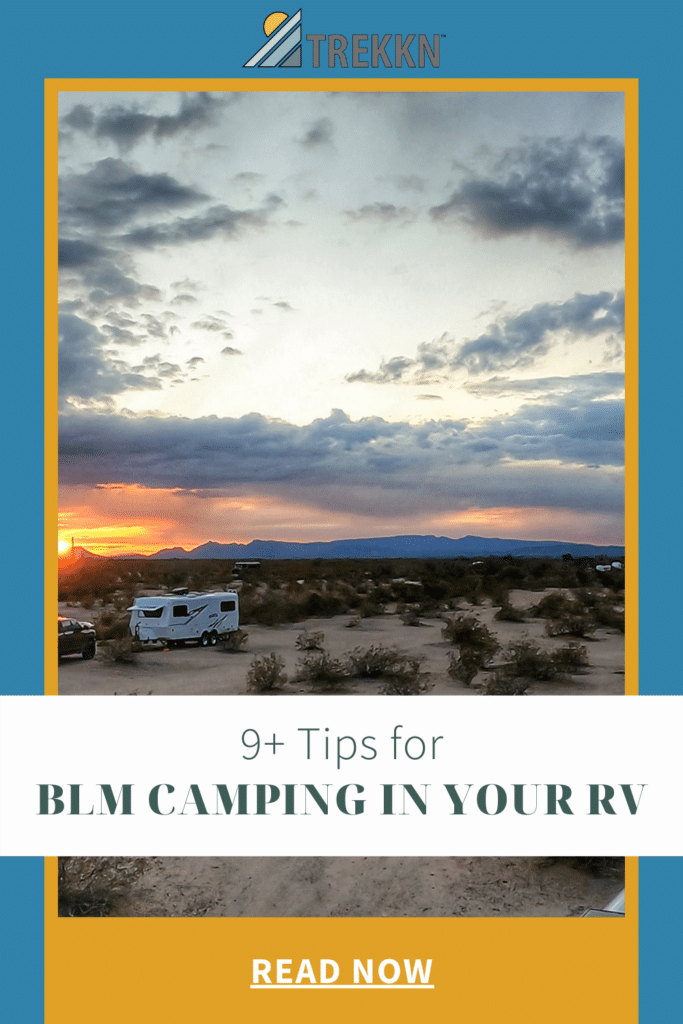
Portable Water Jugs
When we’re heading out for a two-week boondocking trip, we fill our RV fresh water tank and also bring portable jug.
You can reuse a regular gallon jug you might already have in your recycle bin. Or you can buy a bigger water storage container from many hardware stores or Walmart. Amazon, of course, offers water containers and bladders in all shapes and sizes.
- BPA-Free
- Collapsible for easy storage
- Includes spigot
- 2.6 Gallon
We like to have the extra water on hand. It’s also easier to refill the water jugs than to move the RV if your water levels start to run low.
Lightweight, durable, and portable bladder to maintain a backup or emergency water supply.
First Aid Kit
While BLM camping, you may be many miles from the nearest town. It’s always smart to have a basic first aid kit with you.
This can help with insect bites, minor scrapes or burns, and even cactus quills (all of which are likely and common with off-grid camping).
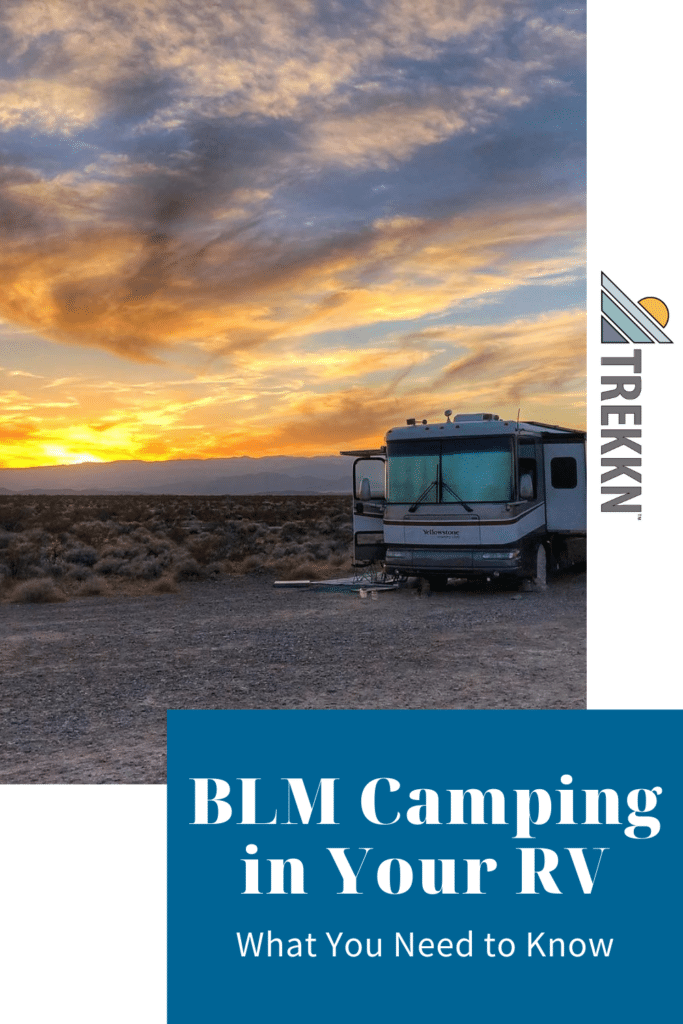
Backup Plans
As I mentioned in the section above about “locating BLM spots”, it’s a good idea to have backup options if you’re planning to camp on public lands. We typically plan three options for every area we want to visit.
For example, when we camp near Las Vegas, we start south of the city and work our way north if out first camping spot don’t pan out.
There are many reasons you might decide to leave a specific site. The camping area may be full, or just too congested for your liking. You might get a bad vibe from the area. Another common reason you need to seek an alternative site is that your first campsite choice ends up being be too small, or inaccessible for your particular RV.
There are dozens of reasons you may not be able to camp at your first choice campsite. Our best advice is to stay flexible and always know your backup options in advance.
Is BLM Camping Right For Your?
After reviewing all of the ins and out of BLM camping, do you think it’s right for you? It may sound like a lot of research and effort, but it can be oh-so-worth-it when you score that epic spot.
Our public lands are incredible and vast, and camping is an intimate and unique way to experience these parts of the country.
Summary of How to Prepare for BLM Camping
Here’s a quick summary list of the tips and advice I provide in this article about how to prepare and plan for dispersed camping:
Get out there and enjoy your public lands!
Related Reading
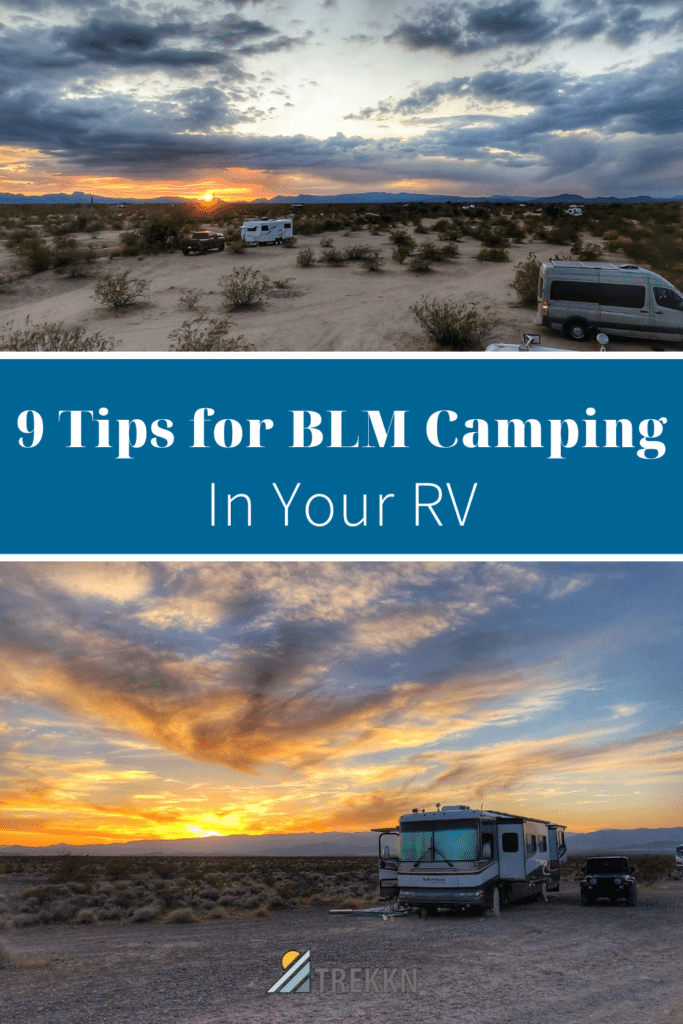
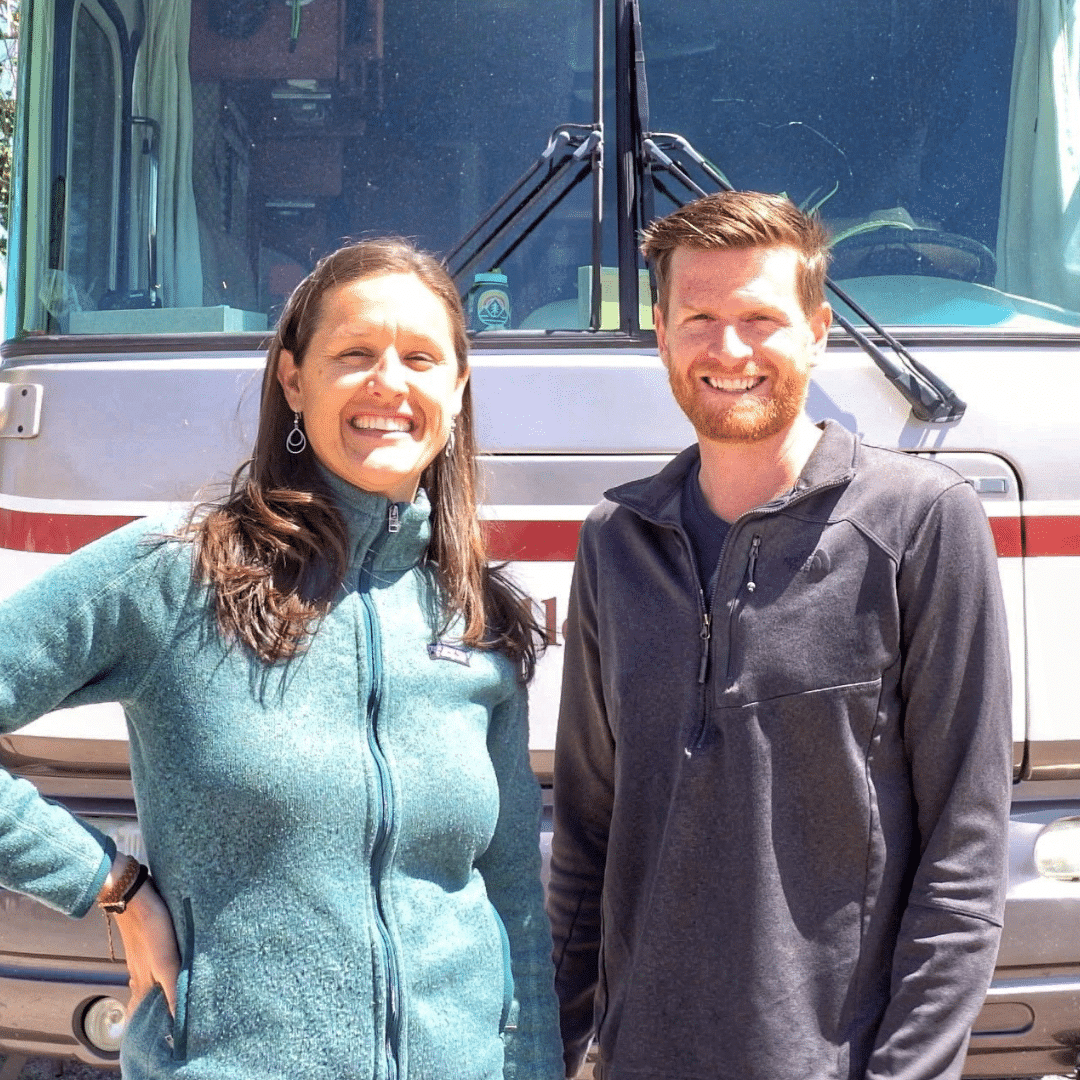
Kristen Bates lives & works from her RV, primarily boondocking off-grid. She owns and operates a women-led travel company, Legit Trips. Kristen loves to explore new places and inspire others to do the same. If she’s not typing away on her laptop, she’s off on an adventure- hiking, biking, or SUP boarding. You can follow her RV adventures @PerpetualMoves and learn more about her travel company at LegitTrips.com.











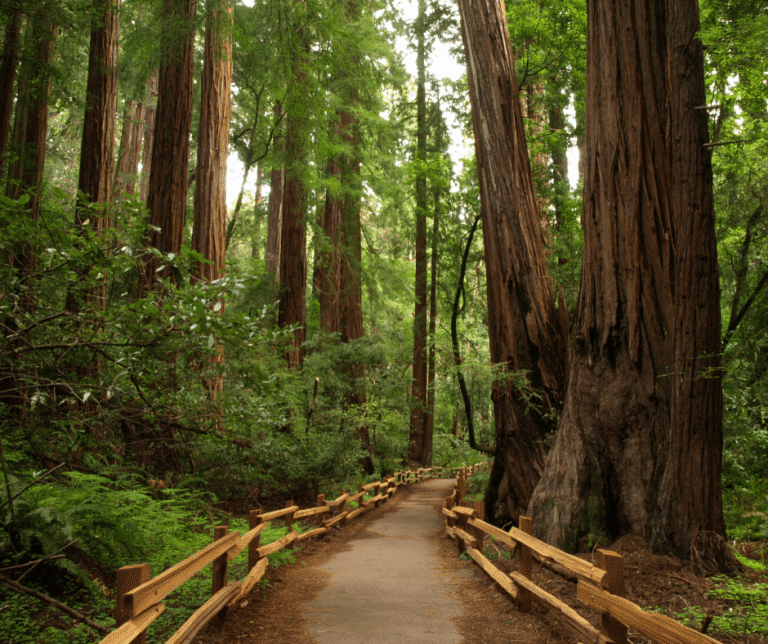
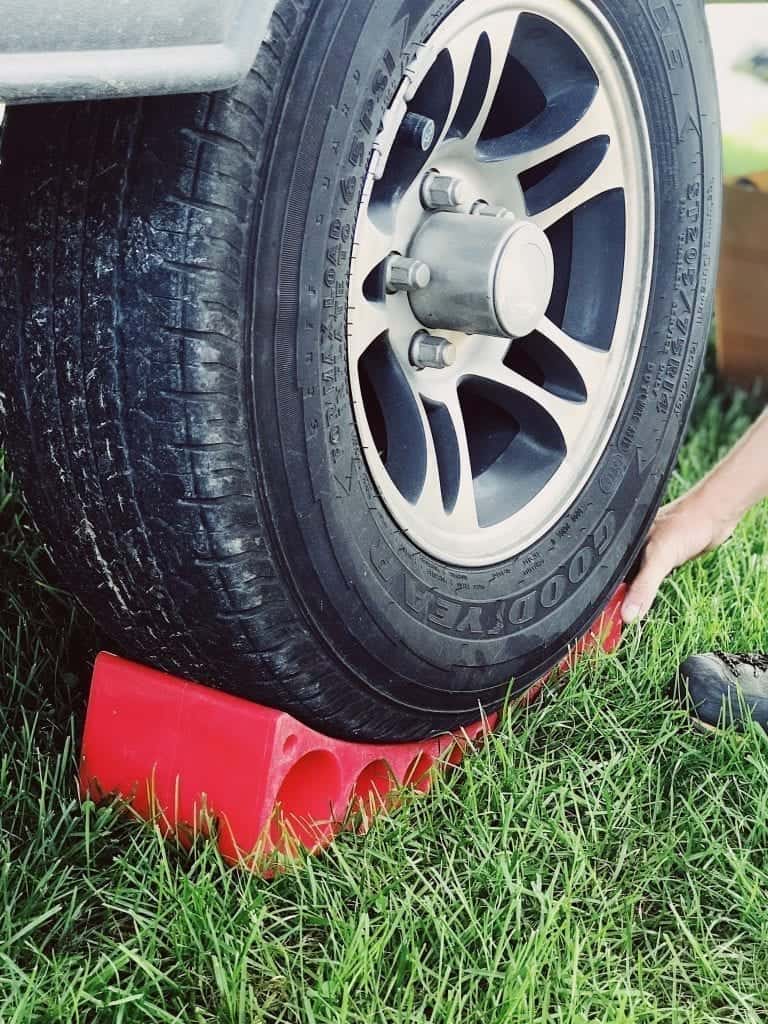
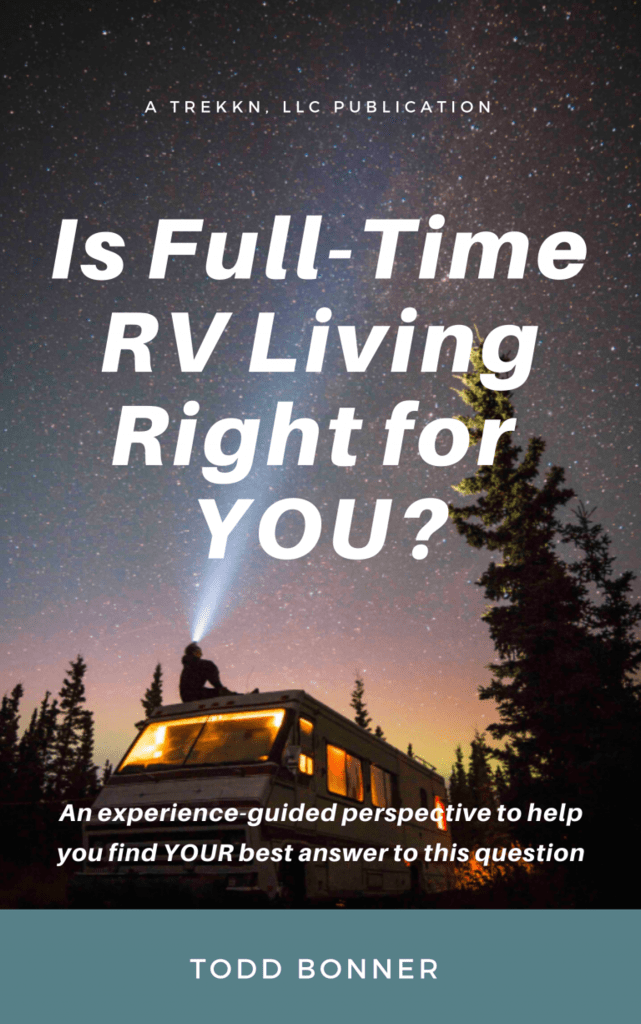

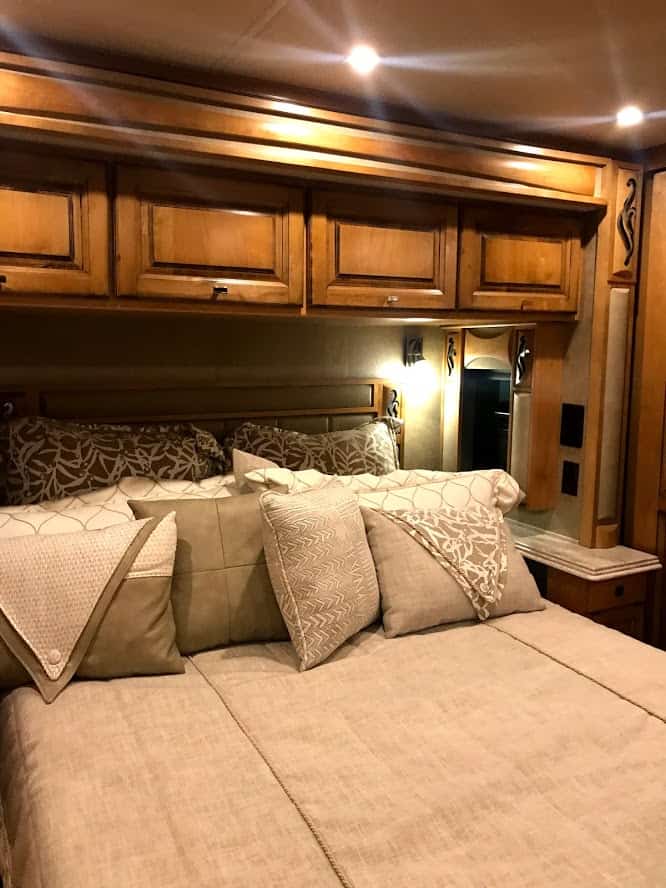
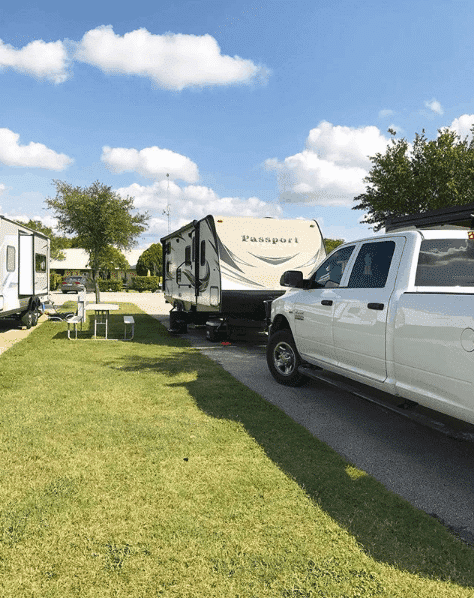
This post is super helpful! I’ve been wanting to try BLM camping in my RV, and the tips about selecting the right spot and being mindful of fire regulations are invaluable. Can’t wait to hit the road and explore!